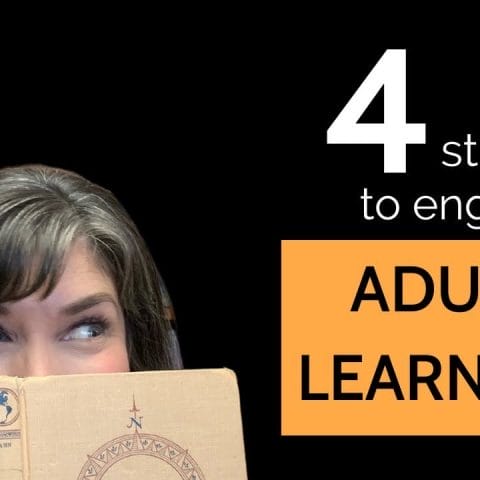In today’s fast-paced business world, teamwork is more important than ever. AI-powered simulations are changing how teams work together and grow their skills. They help organizations innovate, work more efficiently, and stay competitive.
Hyperspace is a leader in AI solutions. They offer tools that help teams work better together. These tools include simulations, learning paths, and role-playing experiences. They make teams more effective by practicing in real-life scenarios.
Hyperspace’s AI simulations are advanced. They have AI avatars that talk and respond like real people. They also adapt to the environment and team mood. This makes learning and working together more realistic and effective.
Key Takeaways
- AI-powered simulations enhance cross-functional collaboration by fostering innovation, improving efficiency, and enabling better decision-making.
- Hyperspace’s suite of soft skills simulations, self-paced learning, and interactive role-playing create realistic scenarios for teams to practice and develop their skills.
- AI features like autonomous avatars, natural language interactions, and dynamic adaptation enable immersive and effective team development experiences.
- AI-driven project management tools and data analysis capabilities streamline processes and provide valuable insights to cross-functional teams.
- Investing in AI-powered collaboration tools and upskilling the workforce are key to successful implementation and integration.
Understanding the Benefits of Cross-Functional Collaboration

In today’s fast-paced business world, cross-departmental teamwork is key to innovation and solving problems. It brings together different views and skills. This way, teams can use everyone’s knowledge better, improving collaborative problem-solving and interpersonal skills development.
Enhancing Innovation and Problem-Solving
Teams from different departments working together can solve complex issues in new ways. This mix of ideas often leads to big breakthroughs. A Gallup study found that teams working well together can see a 21% boost in profits.
Improving Communication Across Teams
Good communication is essential for cross-functional teams to succeed. AI helps by making sure everyone understands each other, no matter where they are. It also handles routine tasks, so team members can focus on important work. This leads to better cross-departmental teamwork and a culture of open communication.
| Benefit | Impact |
|---|---|
| Enhanced Innovation | 21% increase in profitability (Gallup) |
| Improved Communication | Automated translation, jargon elimination, and task automation |
| Data-Driven Decision Making | Aligned departmental goals and optimized resource allocation |
“Collaborative goal-setting often leads to surpassing business targets, as suggested by Harvard Business Review.”
What Are AI Simulations?

AI-powered simulations are changing how teams work together and learn important skills. They use artificial intelligence to create interactive scenarios that are like real-life challenges. These simulations adjust to how users interact, making learning more personal and effective.
Definition and Functionality
AI simulations are virtual places that use AI to create changing scenarios. They offer a safe space for users to try out complex situations and see how their choices affect outcomes. Because they’re AI-powered, these simulations can change and adapt to each user’s needs.
Types of AI Simulations Used in Team Development
- Soft skills simulations: These focus on improving how team members communicate, empathize, and solve conflicts.
- Leadership simulations: AI-driven scenarios help team members practice making decisions and solving problems.
- Cross-functional collaboration simulations: These mimic real-world projects, helping teams work better together across different areas.
These simulations often include AI avatars that can talk naturally and adjust to how users behave. This makes learning fun and helps teams develop key skills for working together well.
“AI simulations are transforming the way teams learn and collaborate, providing immersive, adaptive environments that accelerate skill development and cross-functional coordination.”
Key Features of AI Simulations for Collaboration
Businesses are looking for ways to improve communication and learning across different areas. AI-powered simulations are becoming key tools for this. They offer features that can change how teams work together.
Realistic Scenarios for Team Building
AI simulations create real-life scenarios that mimic business challenges. They help teams practice important skills in a safe space. AI avatars make the experience feel more real with their natural interactions and responses.
Adaptive Learning Environments
AI simulations adapt to each person’s learning style. They work with Learning Management Systems to track progress and give feedback. This helps teams improve their collaboration skills.
Using AI simulations, companies can build a culture of teamwork and learning. They help teams overcome complex challenges.
“AI simulations are reshaping employee training by personalizing learning experiences based on individual needs, past performance, and career aspirations, leading to increased engagement and retention rates.”
Implementing AI Simulations in Your Organization
To use AI-powered simulations for better teamwork, you need a good plan. Start by figuring out what your team needs and wants. Look at the challenges, skills missing, and goals you want to reach with AI simulations.
Identifying Team Needs and Objectives
First, study how your teams work together. Find out what’s hard, what blocks communication, and what needs work. Then, say what you want to get from using AI simulations, like better ideas, solving problems, or working together better.
Selecting the Right AI Simulation Tools
When picking AI simulation tools, think about how they fit with your systems, if you can change them, and if they can grow with you. Choose tools that are easy to use and can be made to fit your team and goals. Hyperspace, for example, has many AI simulations for different industries and team sizes.
Start with a small project that matches your goals. This way, you can test, get feedback, and improve before using it more widely. Starting small helps ensure AI simulations work well and can be used more in your company.
The secret to success is finding the right balance. Identify your team’s needs, choose the right AI tools, and add them slowly to your work flow. This way, you can make the most of AI simulations to improve teamwork and find new solutions.
Measuring Success: Key Performance Indicators
Organizations are now using cross-functional collaboration and AI simulations. It’s important to measure how well these efforts are doing. By looking at key performance indicators (KPIs), businesses can understand their impact. This helps them make better decisions for learning and growth.
Engagement and Participation Metrics
Measuring how well AI simulations work in teamwork is key. Look at how many people use them, how much time they spend, and how well they do. These numbers show how much everyone is involved and committed.
Collaboration Outcomes and Feedback
It’s not just about how many people use the simulations. We also need to see how well they work together. Look at how fast projects get done, how many teams work together, and how well they solve problems. Also, listen to what people say about their experience. This helps us know what’s working and what needs to get better.
AI can give us detailed info on how well teams do. This helps us see what’s going well and what needs work. With this info, we can show how our AI efforts are paying off to important people.
“Companies revising their KPIs with AI are three times more likely to see greater financial benefit than those that do not.”
A global survey and interviews with 17 executives show AI’s power in KPIs. It can really help a company’s finances. By using AI, businesses can improve teamwork, innovation, and success.
Overcoming Challenges in Cross-Functional Teams
Cross-functional teams face unique challenges. These come from different work cultures, communication styles, and priorities. But, AI simulations can help overcome these obstacles and improve teamwork.
Navigating Different Work Cultures
Teams with members from various departments or backgrounds may face cultural clashes. These clashes come from different attitudes, values, and problem-solving approaches. AI simulations offer a safe space for practicing cross-cultural communication and collaboration.
They help team members develop the interpersonal skills needed to bridge these gaps.
Addressing Resistance to Change
Introducing new technologies or workflows can spark skepticism. To overcome resistance to change, show the benefits of AI simulations through pilot programs and success stories. A culture of continuous learning and highlighting the benefits of cross-silo communication and collaborative problem-solving can ease the transition.
By making AI simulations relevant to your organization’s challenges, you can make them more engaging. This approach fosters greater buy-in and adoption.
| Challenge | Solution |
|---|---|
| Communication Breakdowns | AI simulations that facilitate cross-cultural dialogue and empathy building |
| Clashing Priorities | Simulations that align individual and organizational goals through collaborative problem-solving |
| Lack of Trust and Rapport | Simulations that promote team bonding and develop interpersonal skills |
“Successful cross-functional collaboration is not about harmony, it’s about productive conflict and debate – knowing how to surface and work through issues constructively.”
– Harvard Business Review
Best Practices for Facilitating AI-Powered Collaboration
Effective teamwork and learning across departments are vital for AI success. Companies should follow certain best practices to achieve this.
Encouraging Open Communication
It’s important to have open feedback and discussion about AI simulations. This lets teams share insights and work together to improve the simulation. Regular debriefing sessions help teams discuss their learnings and improve continuously.
Establishing Clear Goals and Roles
Clear objectives and defined roles are key in AI simulations. This ensures everyone knows their part in the team. It makes the team work better together towards common goals.
It’s also important to balance AI and human interaction. AI simulations offer personalized feedback, but real-world discussions are essential. This approach helps in retaining skills and applying learnings at work.
“Successful AI-powered collaboration requires a delicate balance between technology-driven insights and human-centric engagement. By fostering open communication and role clarity, organizations can unlock the true AI simulation’s full potentials.
Case Studies of Successful Cross-Functional Team Development
Leading companies have used AI-powered simulations to boost cross-functional collaboration and innovation. Bank of America aims for over 1,500 active simulations by year-end. They focus on giving employees “moments that matter” to use their skills in real scenarios. Credit Suisse, in turn, uses these simulations to build leadership confidence and get teams ready for real challenges.
These examples show the power of combining tech with human touch for the best results. Key takeaways include starting with clear goals, growing gradually, and always seeking feedback. These successes prove that AI simulations can change how teams work together and improve performance.
Examples from Leading Companies
- Bank of America plans to have over 1,500 active AI-powered simulations by year-end, focusing on creating “moments that matter” for skill application.
- Credit Suisse uses AI simulations to build leadership confidence and prepare for real-world challenges.
Lessons Learned and Takeaways
- Start with specific use cases for cross-functional collaboration and virtual team building.
- Gradually scale up the implementation of AI simulations based on feedback and lessons learned.
- Consistently gather feedback from participants to continuously improve the AI-powered simulation experiences.
| Company | Simulation Focus | Key Outcomes |
|---|---|---|
| Bank of America | Creating “moments that matter” for skill application | Plan to have over 1,500 active simulations by year-end |
| Credit Suisse | Building leadership confidence, preparing for real-world challenges | Leveraging AI simulations to enhance team development |
“The success of these programs demonstrates the power of AI simulations in changing how teams work together and improving performance.”
The Future of Cross-Functional Collaboration with AI
The future of working together with AI looks very promising. New AI tech will make talking between teams better, predict problems before they happen, and help teams work together from far away. AI will also make learning more fun and tailored to each team’s needs.
Emerging Trends in AI Technology
Projects like Llama 3.1 and Mistral Large 2 show how AI is getting better. They help teams work together and keep things fair. Also, AI is making things like homes and cities smarter and more connected.
Preparing for a Collaborative Future
Companies need to get ready for this future by learning about AI and staying open to new ideas. Working together and keeping things safe and fair is key. AI will play a big role in how teams work together, so businesses must be ready to adapt.
FAQ
Q: What is the role of AI simulations in developing cross-functional collaboration?
A: AI simulations help teams work better together. They create safe spaces for teams to practice tough situations. This builds confidence and skill before real challenges.
Q: What are the benefits of cross-functional collaboration?
A: Teams from different areas work together for common goals. This leads to new ideas, better processes, smarter decisions, and quick responses to problems.
Q: What are the key features of AI simulations for collaboration?
A: AI simulations offer real-life scenarios for practice. They include AI avatars that act naturally, understand the context, and change their mood and gestures.
Q: How do organizations implement AI simulations for cross-functional team development?
A: First, find out what your team needs and goals are. Look at current challenges, skill gaps, and what you want to achieve. Choose AI tools that fit your systems, can be customized, and grow with your needs.
Q: How can the success of AI simulations be measured?
A: Success is seen in how well teams work together. Look at how often people use the simulations, how well they do, and how much time they spend. Also, check if projects get done faster, if teams work together more, and if they solve problems better.
Q: What are the challenges in implementing AI simulations for cross-functional teams?
A: Teams face issues like different work cultures and communication styles. Show the value of AI simulations with pilot programs and success stories. Encourage learning and highlight the benefits of teamwork.
Q: What are the best practices for facilitating AI-powered collaboration?
A: Encourage open talk about the simulations. Set clear goals and roles to help everyone understand their part. Mix AI with human touch by adding debriefing and real-world talks.
Q: What are the emerging trends in the future of cross-functional collaboration with AI?
A: Trends include better communication, predictive analytics, and virtual reality for remote work. As AI gets smarter, simulations will be more realistic and tailored to each person’s needs.





